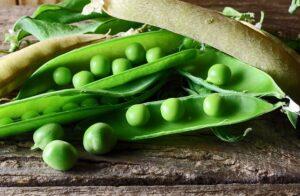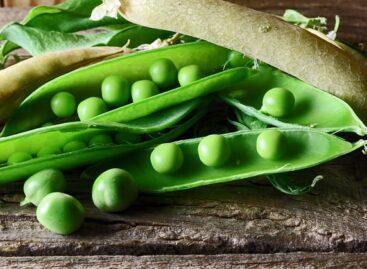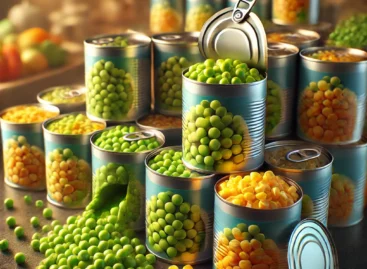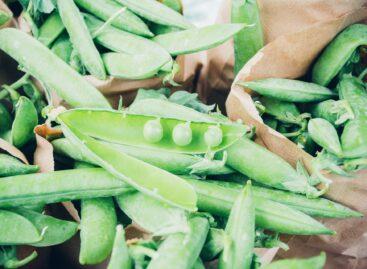Are Hungarian green peas running out? The production of one of the most important staple foods is in crisis
Increasingly expensive input materials, decreasing cultivated area, falling purchase prices and increasingly extreme weather: the combined effect of these factors has pushed domestic green pea production into crisis. According to players in the sector, support is no longer enough to survive – without a technological turnaround and sectoral cooperation, Hungarian green peas may disappear from store shelves, an article by mfror.hu points out.
Sown area reduced by a tenth
 The sown area of green peas has decreased dramatically from 135 thousand hectares in 1990 to less than 14 thousand hectares today – according to data from the Central Statistical Office. The trend may worsen further: many farmers have not sown the crop this year either. The primary reason for the decline in production is the explosion in the prices of input materials – especially fertilizers and pesticides – but climate change is also posing an increasing challenge to the sector.
The sown area of green peas has decreased dramatically from 135 thousand hectares in 1990 to less than 14 thousand hectares today – according to data from the Central Statistical Office. The trend may worsen further: many farmers have not sown the crop this year either. The primary reason for the decline in production is the explosion in the prices of input materials – especially fertilizers and pesticides – but climate change is also posing an increasing challenge to the sector.
“The increase in production costs since 2016 has culminated this year in the fact that purchase prices have also fallen,” says István Varga, vice president of FruitVeB. While two years ago the price of green peas per kilo ranged between 200–230 forints, in 2025 they will only be 150 forints. This is a significant step back, especially since production costs reach 0.9–1.2 million forints per hectare.
There is no price without an export market
One of the important markets for domestic green pea production was the Russian and Ukrainian markets, where a significant amount of canned products were sold. Although the EU embargo does not cover this product range, the war situation still reduced the volume of exports by a third. Domestic purchase prices have fallen accordingly, and farmers can only achieve a slightly higher price by taking on irrigated areas and transportation costs.
Risky cultivation, modest yield
Green peas are not only sensitive to drought, but also to spring cooling and summer heat waves – in other words, to all kinds of weather extremes that have become increasingly common due to climate change. Therefore, cultivation is primarily concentrated in Békés and Hajdú-Bihar counties, where soil conditions are more favorable.
Cultivation without irrigation can yield as little as 3–4 tons per hectare – which means a certain loss at current prices. Although modern technology can achieve a yield of 7–10 tons, at least 6–7 tons of yield is needed to recover costs. According to the vice president, the quarter-million-forty-one subsidy per hectare is now the only sure source of income for producers.
Related news
Green pea foreign trade balance is positive
🎧 Hallgasd a cikket: Lejátszás Szünet Folytatás Leállítás Nyelv: Auto…
Read more >This year’s drought also had a negative impact on the performance of the canning industry
🎧 Hallgasd a cikket: Lejátszás Szünet Folytatás Leállítás Nyelv: Auto…
Read more >Serious decline in Hungarian green pea production
🎧 Hallgasd a cikket: Lejátszás Szünet Folytatás Leállítás Nyelv: Auto…
Read more >Related news
How do young adults celebrate?
🎧 Hallgasd a cikket: Lejátszás Szünet Folytatás Leállítás Nyelv: Auto…
Read more >Vajda-Papír celebrates Ooops!’s 15th anniversary with a hybrid AI campaign
🎧 Hallgasd a cikket: Lejátszás Szünet Folytatás Leállítás Nyelv: Auto…
Read more >Pre-holiday shopping at up to half price
🎧 Hallgasd a cikket: Lejátszás Szünet Folytatás Leállítás Nyelv: Auto…
Read more >






